NISSAN Versa Hatchback Owner's Manual 2009

FOREWORD |
READ FIRST—THEN DRIVE SAFELY |
Welcome to the growing family of new NISSAN owners. This vehicle is delivered to you with confidence. It was produced using the latest techniques and strict quality control.
This manual was prepared to help you understand the operation and maintenance of your vehicle so that you may enjoy many miles (kilometers) of driving pleasure. Please read through this manual before operating your vehicle.
A separate Warranty Information Booklet explains details about the warranties covering your vehicle. The “NISSAN Service and Maintenance Guide” explains details about maintaining and servicing your vehicle. Additionally, a separate Customer Care/Lemon Law Booklet (U.S. only) will explain how to resolve any concerns you may have with your vehicle, as well as clarify your rights under your state’s lemon law.
Your NISSAN dealership knows your vehicle best. When you require any service or have any questions, they will be glad to assist you with the extensive resources available to them.
Before driving your vehicle, please read this Owner’s Manual carefully. This will ensure familiarity with controls and maintenance requirements, assisting you in the safe operation of your vehicle.
WARNING
IMPORTANT SAFETY INFORMATION REMINDERS FOR SAFETY!
Follow these important driving rules to help ensure a safe and comfortable trip for you and your passengers!
●NEVER drive under the influence of alcohol or drugs.
●ALWAYS observe posted speed limits and never drive too fast for conditions.
●ALWAYS give your full attention to driving and avoid using vehicle features or taking other actions that could distract you.
●ALWAYS use your seat belts and appropriate child restraint systems. Preteen children should be seated in the rear seat.
●ALWAYS provide information about the proper use of vehicle safety features to all occupants of the vehicle.
●ALWAYS review this Owner’s Manual for important safety information.
MODIFICATION OF YOUR VEHICLE
This vehicle should not be modified. Modification could affect its performance, safety or durability, and may even violate governmental regulations. In addition, damage or performance problems resulting from modifications may not be covered under NISSAN warranties.
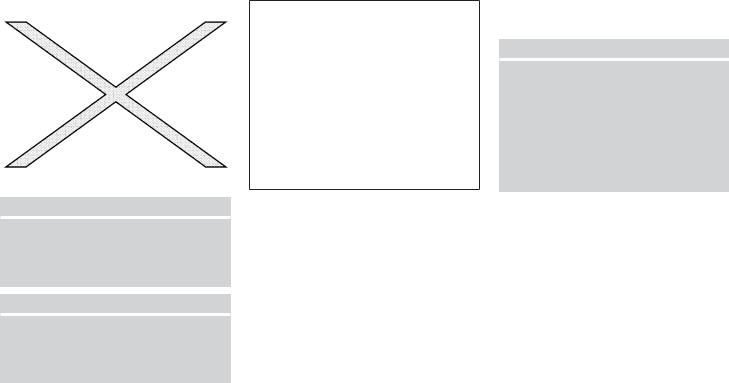
WHEN READING THE MANUAL
This manual includes information for all options available on this model. Therefore, you may find some information that does not apply to your vehicle.
All information, specifications and illustrations in this manual are those in effect at the time of printing. NISSAN reserves the right to change specifications or design without notice and without obligation.
IMPORTANT INFORMATION ABOUT THIS MANUAL
You will see various symbols in this manual. They are used in the following ways:
WARNING
This is used to indicate the presence of a hazard that could cause death or serious personal injury. To avoid or reduce the risk, the procedures must be followed precisely.
CAUTION
This is used to indicate the presence of a hazard that could cause minor or moderate personal injury or damage to your vehicle. To avoid or reduce the risk, the procedures must be followed carefully.
APD1005
If you see this symbol, it means “Do not do this” or “Do not let this happen.”
If you see a symbol similar to these in an illustration, it means the arrow points to the front of the vehicle.
Arrows in an illustration that are similar to these indicate movement or action.
Arrows in an illustration that are similar to these call attention to an item in the illustration.
CALIFORNIA PROPOSITION 65 WARNING
WARNING
Engine exhaust, some of its constituents, and certain vehicle components contain or emit chemicals known to the State of California to cause cancer and birth defects or other reproductive harm. In addition, certain fluids contained in vehicles and certain products of component wear contain or emit chemicals known to the State of California to cause cancer and birth defects or other reproductive harm.
CALIFORNIA PERCHLORATE ADVISORY
Some vehicle parts, such as lithium batteries, may contain perchlorate material. The following advisory is provided: “Perchlorate Material – special handling may apply, See www.dtsc.ca.gov/hazardouswaste/perchlorate.”

BLUETOOTH is a trademark owned by Bluetooth SIG, Inc., U.S.A. and licensed to Xanavi Informatics Corporation.
XM Radio requires subscription, sold separately after first 90 days. Not available in Alaska, Hawaii or Guam. For more information, visit www.xmradio.com.
© Nissan Mexicana, S. A. de C. V.
All rights reserved. No part of this Owner’s Manual may be reproduced or stored in a retrieval system, or transmitted in any form, or by any means, electronic, mechanical, photocopying, recording or otherwise, without the prior written permission of Nissan Mexicana, S. A. de C. V.
NISSAN CUSTOMER CARE PROGRAM
NISSAN CARES . . .
Both NISSAN and your NISSAN dealer are dedicated to serving all your automotive needs. Your satisfaction with your vehicle and your NISSAN dealer are our primary concerns. Your NISSAN dealer is always available to assist you with all your automobile sales and service needs.
However, if there is something that your NISSAN dealer cannot assist you with or you would like to provide NISSAN directly with comments or questions, please contact the NISSAN Consumer Affairs Department using our toll-free number:
For U.S. customers 1-800-NISSAN-1 (1-800-647-7261)
For Canadian customers 1-800-387-0122
The Consumer Affairs Department will ask for the following information:
–Your name, address, and telephone number
–Vehicle identification number (attached to the top of the instrument panel on the driver’s side)
–Date of purchase
–Current odometer reading
–Your NISSAN dealer’s name
–Your comments or questions
OR
You can write to NISSAN with the information at:
For U.S. customers
Nissan North America, Inc.
Consumer Affairs Department
P.O. Box 685003
Franklin, TN 37068-5003
For Canadian customers Nissan Canada Inc. 5290 Orbitor Drive
Mississauga, Ontario L4W 4Z5
We appreciate your interest in NISSAN and thank you for buying a quality NISSAN vehicle.
Table of
Contents
Illustrated table of contents |
|
0 |
|
|
|
|
|
|
Safety—Seats, seat belts and supplemental restraint system |
|
1 |
|
|
|
|
|
|
Instruments and controls |
|
2 |
|
|
|
|
|
|
Pre-driving checks and adjustments |
|
3 |
|
|
|
|
|
|
Heater, air conditioner, audio and phone systems |
|
4 |
|
|
|
|
|
|
Starting and driving |
|
5 |
|
|
|
|
|
|
In case of emergency |
|
6 |
|
|
|
|
|
|
Appearance and care |
|
7 |
|
|
|
|
|
|
Maintenance and do-it-yourself |
|
8 |
|
|
|
|
|
|
Technical and consumer information |
|
9 |
|
|
|
Index |
|
10 |
|
|
|

0 Illustrated table of contents
Air bags, seat belts and child restraints . . . . . . . . . . . . . . 0-2 Exterior front . . . . . . . . . . . . . . . . . . . . . . . . . . . . . . . . . . . . . . 0-3 Exterior rear. . . . . . . . . . . . . . . . . . . . . . . . . . . . . . . . . . . . . . . 0-4 Passenger compartment . . . . . . . . . . . . . . . . . . . . . . . . . . . 0-6
Instrument panel. . . . . . . . . . . . . . . . . . . . . . . . . . . . . . . . . . . 0-7 Engine compartment check locations . . . . . . . . . . . . . . . . 0-8 Warning/indicator lights . . . . . . . . . . . . . . . . . . . . . . . . . . . 0-10
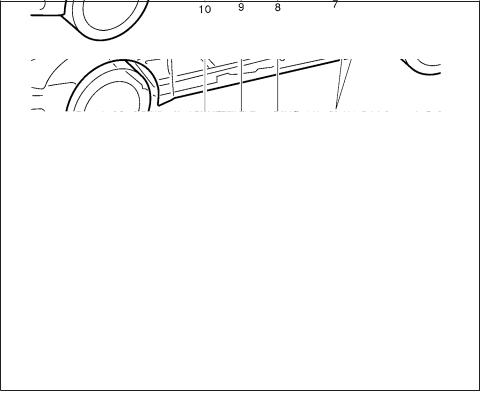
AIR BAGS, SEAT BELTS AND CHILD
RESTRAINTS
1. Supplemental front-impact air bags (P. 1-36)
2. Roof-mounted curtain side-impact supplemental air bag (P. 1-36)
3. Front seat-mounted side-impact supplemental air bag (P. 1-36)
4. Front seat belts (P. 1-7)
5. Front-Seat Active Head Restraints (P. 1-6)
6. Rear seat belts (P. 1-7)
7. LATCH (Lower Anchors and Tethers for CHildren) (P. 1-17)
8. Seat belt with pretensioner (P. 1-49)
9. Seats (P. 1-2)
10. Occupant classification sensor (pressure sensor) (P. 1-36)
See the page number indicated in parentheses for operating details.
WII0157
0-2 Illustrated table of contents

EXTERIOR FRONT
1. Engine hood (P. 3-22)
2. Windshield wiper and washer switch (P. 2-17)
3. Windshield (P. 8-20)
4. Moonroof (if so equipped) (P. 2-32)
5. Power windows (P. 2-29)
6. Door locks, keyfob, NISSAN Intelligent Key ™ (if so equipped), keys
(P. 3-4, 3-7, 3-3, 3-2) 7. Mirrors (P. 3-29)
8. Tire pressure (P. 8-34)
9. Flat tire (P. 6-2)
10. Tire chains (P. 8-41)
11. Headlight and turn signal switch (P. 2-19)
12. Replacing bulbs (P. 8-29)
13. Fog light switch (if so equipped) (P. 2-19)
14. Tie down hook (if so equipped) (P. 6-13)
See the page number indicated in parentheses for operating details.
WII0101
Illustrated table of contents 0-3

EXTERIOR REAR
Hatchback
1. Rear hatch opener switch/NISSAN Intelligent Key™ (P. 3-23, 3-13)
2. Rear window defroster switch (P. 2-19)
3. Antenna (P. 4-28)
4. Child safety rear door locks (P. 3-6) 5. Fuel-filler door (P. 3-26)
6. Fuel-filler cap, fuel recommendation (P. 3-27, 9-4)
7. Replacing bulbs (P. 8-29)
8. Interior hatch release (P. 3-24)
9. Rear window washer (P. 2-18)
See the page number indicated in parentheses for operating details.
WII0093
0-4 Illustrated table of contents

Sedan
1.Interior trunk lid release (P. 3-26 )
2.Rear window defroster switch (P. 2-19)
3.Antenna (P. 4-28)
4.Child safety rear door locks (P. 3-6)
5.Fuel-filler door (P. 3-26)
6.Fuel-filler cap, fuel recommendation (P. 3-27, 9-4)
7.Replacing bulbs (P. 8-29)
8.Trunk opener switch/NISSAN Intelligent Key ™ (if so equipped) (P. 3-24 / 3-13)
See the page number indicated in parentheses for operating details.
WII0102
Illustrated table of contents 0-5

PASSENGER COMPARTMENT
1. Cargo cover (hatchback model only) (P. 2-27)
2. Rear seat (P. 1-4)
3. Interior lights (P. 2-34)
4. Front seat (P. 1-2)
5. Sun visors (P. 3-28)
6. Moonroof switch (if so equipped) (P. 2-32)
7. Map lights (P. 2-34)
8. Sunglasses holder (P. 2-25)
9. Glove box (P. 2-26)
10. Parking brake, parking on hills (P. 5-23, 5-27)
11. Rear armrest (if so equipped) (P. 1-5)
See the page number indicated in parentheses for operating details.
LII0083
0-6 Illustrated table of contents

INSTRUMENT PANEL
WIC1286
1.Outside mirror control switch (if so equipped) (P. 3-29)
2.Headlight/fog light (if so equipped)/turn signal switch (P. 2-19)
3.Steering wheel switch for audio control and Bluetooth hands-free phone system (if so equipped) (P. 4-27, 4-29)
4.Driver’s supplemental air bag/horn (P. 1-36, 2-22)
5.Meters and gauges (P. 2-3)
6.Cruise control main/set switches (if so equipped) (P. 5-24)
7.Windshield wiper/washer switch (P. 2-17, 2-18)
8.Audio system (if so equipped) (P. 4-10)
9.Storage bin (P. 2-23)
10.Center ventilator (P. 4-2)
11.Passenger’s supplemental air bag (P. 1-36)
12.Side ventilator (P. 4-2)
13.Glove box (P. 2-26)
14.Hazard warning flasher switch (P. 2-22)
15.Cup holders (P. 2-25)
16.Shift selector (P. 5-14)
17.Defroster switch (P. 2-19)
18.Climate control (P. 4-3)
19.Passenger air bag status light (P. 1-44)
20.Ignition switch (P. 5-7)
21.Tilt steering (P. 3-28)
22.Hood release lever (P. 3-22)
23.Fuel-filler lid release lever (P. 3-26)
24.Fuse block (P. 8-23)
25.Instrument brightness control (P. 2-21)
See the page number indicated in parentheses for operating details.
Illustrated table of contents 0-7

ENGINE COMPARTMENT CHECK
LOCATIONS
HR16DE
1. Engine oil filler cap (P. 8-9)
2. Brake and clutch (*1) fluid reservoir (P. 8-15)
3. Air cleaner (P. 8-20)
4. Battery (P. 8-16)
5. Fuse/fusible link box (P. 8-23)
6. Automatic transmission fluid (ATF) dipstick (*2) (P. 8-13)
7. Radiator cap (P. 8-8)
8. Engine coolant reservoir (P. 8-8)
9. Engine oil dipstick (P. 8-9)
10. Drive belt location (P. 8-18)
11. Windshield washer fluid reservoir (P. 8-16)
*1 For Manual Transmission (M/T) model
*2 For Automatic Transmission (A/T) model
See the page number indicated in parentheses for operating details.
WDI0697
0-8 Illustrated table of contents

MR18DE
1. Engine oil filler cap (P. 8-9)
2. Brake and clutch (*1) fluid reservoir (P. 8-15)
3. Air cleaner (P. 8-20)
4. Battery (P. 8-16)
5. Fuse/fusible link box (P. 8-23)
6. Automatic transmission fluid (ATF) dipstick (*2) (P. 8-13)
7. Radiator cap (P. 8-8)
8. Engine oil dipstick (P. 8-9)
9. Engine coolant reservoir (P. 8-8)
10. Drive belt location (P.8-18)
11. Windshield washer fluid reservoir (P. 8-16)
*1 For Manual Transmission (M/T) model
*2 For Automatic Transmission (A/T) model
See the page number indicated in parentheses for operating details.
LII0171
Illustrated table of contents 0-9
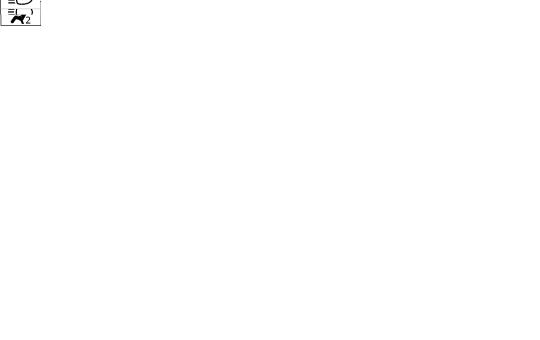
WARNING/INDICATOR LIGHTS
Warning |
Name |
Page |
light |
|
|
|
|
|
|
Anti-lock Braking |
2-7 |
or |
System (ABS) warn- |
|
ing light (if so |
|
|
|
|
|
|
equipped) |
|
|
|
|
|
Brake warning light |
2-7 |
or |
|
|
|
|
|
|
Charge warning light |
2-8 |
|
|
|
|
Door open warning |
2-8 |
|
light |
|
|
|
|
|
Electric power |
2-8 |
|
steering warning |
|
|
light |
|
|
|
|
|
Engine oil pressure |
2-8 |
|
warning light |
|
|
|
|
|
High temperature |
2-8 |
|
warning light (red) |
|
|
|
|
Warning |
Name |
Page |
light |
|
|
|
|
|
|
Intelligent Key lock |
2-9 |
|
warning light (M/T |
|
|
models) (if so |
|
|
equipped) |
|
|
|
|
|
Low fuel warning |
2-9 |
|
light |
|
|
|
|
|
Low tire pressure |
2-9 |
|
warning light |
|
|
|
|
|
Low windshield |
2-10 |
|
washer fluid warning |
|
|
light (if so equipped) |
|
|
|
|
|
NISSAN Intelligent |
2-10 |
|
Key ™ warning light |
|
|
(if so equipped) |
|
|
|
|
|
P position selecting |
2-11 |
|
warning light (CVT |
|
|
models) (if so |
|
|
equipped) |
|
|
|
|
|
Seat belt warning |
2-11 |
|
light and chime |
|
|
|
|
Warning |
Name |
Page |
light |
|
|
|
|
|
|
Supplemental air |
2-11 |
|
bag warning light |
|
|
|
|
|
|
|
Indicator |
Name |
Page |
light |
|
|
|
|
|
|
Automatic Transmis- |
2-11 |
|
sion (A/T) / Con- |
|
|
tinuously Variable |
|
|
Transmission (CVT) |
|
|
position indicator |
|
|
light |
|
|
|
|
|
CRUISE main |
2-11 |
|
switch indicator light |
|
|
(if so equipped) |
|
|
|
|
|
Cruise SET switch |
2-12 |
|
indicator light (if so |
|
|
equipped) |
|
|
|
|
|
Front passenger air |
2-12 |
|
bag status light |
|
|
|
|
|
High beam indicator |
2-12 |
|
light (blue) |
|
|
|
|
0-10 Illustrated table of contents

Indicator |
Name |
Page |
light |
|
|
|
|
|
|
Low temperature |
2-12 |
|
indicator light (blue) |
|
|
|
|
|
Malfunction Indica- |
2-12 |
|
tor Light (MIL) |
|
|
|
|
|
Overdrive OFF indi- |
2-13 |
|
cator light (A/T / |
|
|
CVT models) |
|
|
|
|
|
Security indicator |
2-13 |
|
light |
|
|
|
|
|
Turn signal/hazard |
2-13 |
|
indicator lights |
|
|
|
|
Illustrated table of contents 0-11
MEMO
0-12 Illustrated table of contents

1 Safety—Seats, seat belts and supplemental restraint system
Seats . . . . . . . . . . . . . . . . . . . . . . . . . . . . . . . . . . . . . . . . . . . . 1-2 Front manual seat adjustment . . . . . . . . . . . . . . . . . . . . 1-2 Folding rear seat (if so equipped). . . . . . . . . . . . . . . . . 1-4 Front-Seat Active Head Restraints. . . . . . . . . . . . . . . . 1-6 Head restraint adjustment . . . . . . . . . . . . . . . . . . . . . . . 1-6
Seat belts . . . . . . . . . . . . . . . . . . . . . . . . . . . . . . . . . . . . . . . . 1-7 Precautions on seat belt usage. . . . . . . . . . . . . . . . . . . 1-7 Child safety . . . . . . . . . . . . . . . . . . . . . . . . . . . . . . . . . . . 1-10 Pregnant women . . . . . . . . . . . . . . . . . . . . . . . . . . . . . . 1-11 Injured persons. . . . . . . . . . . . . . . . . . . . . . . . . . . . . . . . 1-11 Three-point type seat belt with retractor . . . . . . . . . . 1-11 Seat belt extenders . . . . . . . . . . . . . . . . . . . . . . . . . . . . 1-14 Seat belt maintenance . . . . . . . . . . . . . . . . . . . . . . . . . 1-15
Child restraints . . . . . . . . . . . . . . . . . . . . . . . . . . . . . . . . . . . 1-15 Precautions on child restraints . . . . . . . . . . . . . . . . . . 1-15
LATCH (Lower Anchors and Tethers for
CHildren) System . . . . . . . . . . . . . . . . . . . . . . . . . . . . . 1-17 Top tether strap child restraint . . . . . . . . . . . . . . . . . . 1-19 Child restraint installation using LATCH . . . . . . . . . . 1-21 Child restraint installation using the seat
belts . . . . . . . . . . . . . . . . . . . . . . . . . . . . . . . . . . . . . . . . . 1-25 Booster seats . . . . . . . . . . . . . . . . . . . . . . . . . . . . . . . . . . . . 1-31 Precautions on booster seats . . . . . . . . . . . . . . . . . . . 1-31 Booster seat installation . . . . . . . . . . . . . . . . . . . . . . . . 1-33 Supplemental restraint system . . . . . . . . . . . . . . . . . . . . . 1-36
Precautions on supplemental restraint
system . . . . . . . . . . . . . . . . . . . . . . . . . . . . . . . . . . . . . . . 1-36 Supplemental air bag warning labels. . . . . . . . . . . . . 1-50 Supplemental air bag warning light . . . . . . . . . . . . . . 1-50
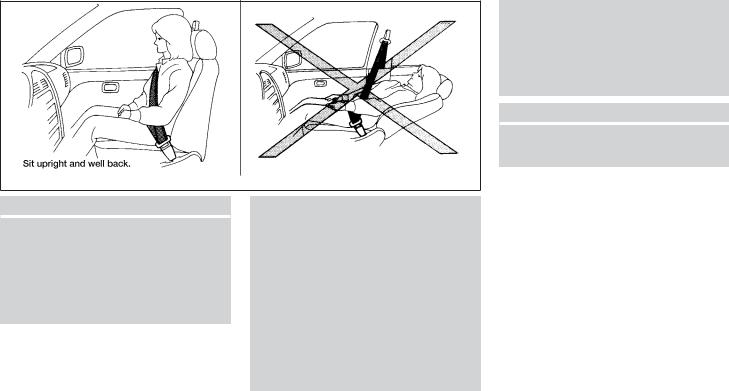
SEATS
ARS1152
WARNING
●Do not ride in a moving vehicle when the seatback is reclined. This can be dangerous. The shoulder belt will not be against your body. In an accident, you could be thrown into it and receive neck or other serious injuries. You could also slide under the lap belt and receive serious internal injuries.
●For the most effective protection when the vehicle is in motion, the seat should be upright. Always sit well back in the seat with both feet on the floor and adjust the seat properly. See “Precautions on seat belt usage” later in this section.
●After adjustment, gently rock in the seat to make sure it is securely locked.
●Do not leave children unattended inside the vehicle. They could unknowingly activate switches or controls. Unattended children could become involved in serious accidents.
1-2 Safety—Seats, seat belts and supplemental restraint system
●The seatback should not be reclined any more than needed for comfort. Seat belts are most effective when the passenger sits well back and straight up in the seat. If the seatback is reclined, the risk of sliding under the lap belt and being injured is increased.
CAUTION
When adjusting the seat positions, be sure not to contact any moving parts to avoid possible injuries and/or damage.
FRONT MANUAL SEAT
ADJUSTMENT

WRS0692
Forward and backward
Pull the lever up and hold it while you slide the seat forward or backward to the desired position. Release the lever to lock the seat in position.
WRS0720
Reclining
To recline the seatback, pull the lever up and lean back. To bring the seatback forward, pull the lever up and lean your body forward. Release the lever to lock the seatback in position.
The reclining feature allows adjustment of the seatback for occupants of different sizes for added comfort and to help obtain proper seat belt fit. See “Precautions on seat belt usage” later in this section. Also, the seatback can be reclined to allow occupants to rest when the vehicle is stopped and the transmission is in P (Park) or N (Neutral) position with the parking brake fully applied.
WRS0694
Seat lifter (if so equipped for driver’s seat)
Pull up or push down the adjusting lever to adjust the seat height until the desired position is achieved.
Safety—Seats, seat belts and supplemental restraint system 1-3
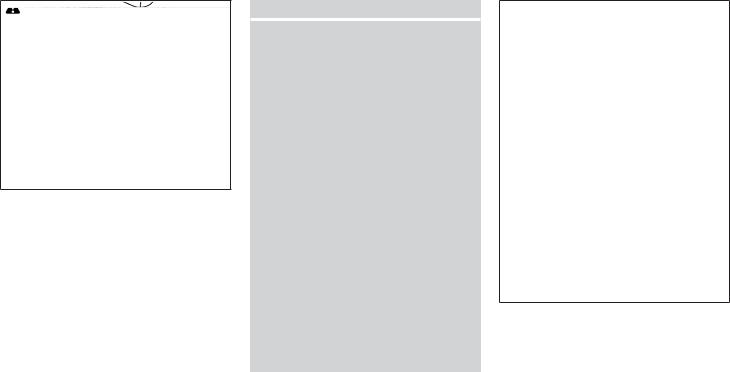
WRS0758
FOLDING REAR SEAT (if so equipped)
1 Remove the cargo cover (hatchback model only) from the rear seatback.
2 Pull the knob A to fold each seatback down.
WARNING
●Never allow anyone to ride in the cargo area or on the rear seat when it is in the fold-down position. Use of these areas by passengers without proper restraints could result in serious injury in an accident or sudden stop.
●Properly secure all cargo with ropes or straps to help prevent it from sliding or shifting. Do not place cargo higher than the seatbacks. In a sudden stop or collision, unsecured cargo could cause personal injury.
●When returning the seatbacks to the upright position, be certain they are completely secured in the latched position. If they are not completely secured, passengers may be injured in an accident or sudden stop.
●Closely supervise children when they are around cars to prevent them from playing and becoming locked in the trunk where they could be seriously injured. Keep the car locked, with the rear seatback and trunk lid securely latched when not in use, and prevent children’s access to car keys.
1-4 Safety—Seats, seat belts and supplemental restraint system
SSS0591
Type A
Interior trunk access (if so equipped for Sedan models)
Type A
Fold down the rear center armrest 1 and open the trunk access panel 2 .
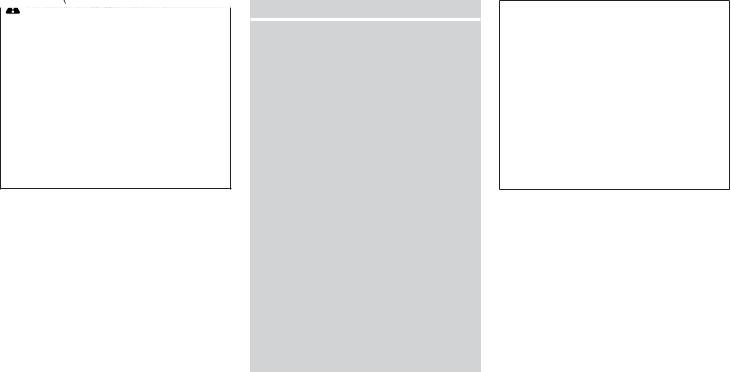
SSS0592
Type B
Type B
Pull the knob 1 to fold each seatback down 2 .
When returning the seatback to the upright position, make sure the seat belt is routed through the guide A .
WARNING
●Never allow anyone to ride in the cargo area or on the rear seat when it is in the fold-down position. Use of these areas by passengers without proper restraints could result in serious injury in an accident or sudden stop.
●Properly secure all cargo with ropes or straps to help prevent it from sliding or shifting. Do not place cargo higher than the seatbacks. In a sudden stop or collision, unsecured cargo could cause personal injury.
●When returning the seatbacks to the upright position, be certain they are completely secured in the latched position. If they are not completely secured, passengers may be injured in an accident or sudden stop.
●Closely supervise children when they are around cars to prevent them from playing and becoming locked in the trunk where they could be seriously injured. Keep the car locked, with the rear seatback and trunk lid securely latched when not in use, and prevent children’s access to car keys.
WRS0755
Center armrest (if so equipped)
Pull the armrest down until it is horizontal.
Safety—Seats, seat belts and supplemental restraint system 1-5
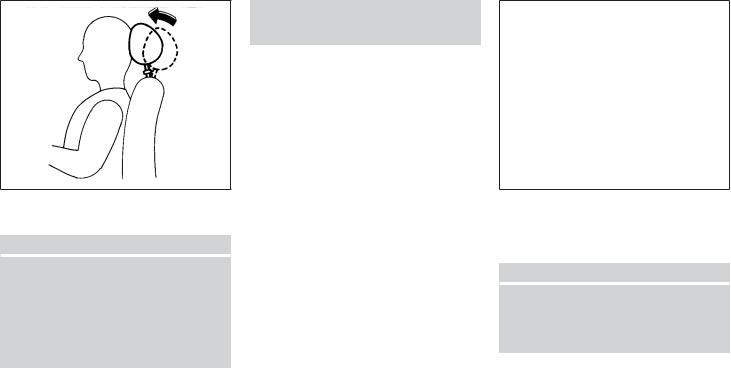
SPA1025
FRONT-SEAT ACTIVE HEAD RESTRAINTS
WARNING
●Always adjust the head restraints properly as specified in this section. Failure to do so can reduce the effectiveness of the Active Head Restraint.
●Active Head Restraints are designed to supplement other safety systems. Always wear seat belts. No system can prevent all injuries in any accident.
●Do not attach anything to the head restraint stalks. Doing so could impair Active Head Restraint function.
The Active Head Restraint moves forward utilizing the force that the seatback receives from the occupant in a rear-end collision. The movement of the head restraint helps support the occupant’s head by reducing its backward movement and helping absorb some of the forces that may lead to whiplash-type injuries.
Active Head Restraints are effective for collisions at low to medium speeds in which it is said that whiplash injuries occur most.
Active Head Restraints operate only in certain rear-end collisions. After the collision, the head restraints return to their original positions.
Properly adjust the Active Head Restraints as described in this section.
LRS0286
HEAD RESTRAINT ADJUSTMENT
To raise the head restraint, pull it up. To lower, push and hold the lock knob and push the head restraint down.
WARNING
Head restraints should be adjusted properly as they may provide significant protection against injury in an accident. Do not remove them. Check the adjustment after someone else uses the seat.
1-6 Safety—Seats, seat belts and supplemental restraint system

SEAT BELTS
WRS0134
Adjust the head restraint so the center is level with the center of your ears.
SSS0136
PRECAUTIONS ON SEAT BELT
USAGE
If you are wearing your seat belt properly adjusted and you are sitting upright and well back in your seat with both feet on the floor, your chances of being injured or killed in an accident and/or the severity of injury may be greatly reduced. NISSAN strongly encourages you and all of your passengers to buckle up every time you drive, even if your seating position includes a supplemental air bag.
Most U.S. states and Canadian provinces or territories specify that seat belts be worn at all times when a vehicle is being driven.
Safety—Seats, seat belts and supplemental restraint system 1-7
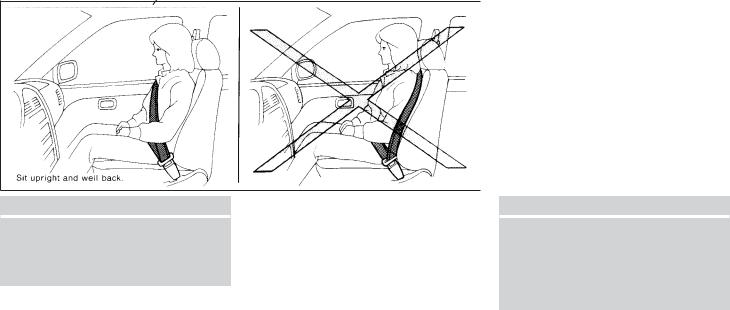
WARNING
●Every person who drives or rides in this vehicle should use a seat belt at all times. Children should be properly restrained in the rear seat and, if appropriate, in a child restraint.
SSS0134 |
|
SSS0016 |
WARNING
●The seat belt should be properly adjusted to a snug fit. Failure to do so may reduce the effectiveness of the entire restraint system and increase the chance or severity of injury in an accident. Serious injury or death can occur if the seat belt is not worn properly.
1-8 Safety—Seats, seat belts and supplemental restraint system
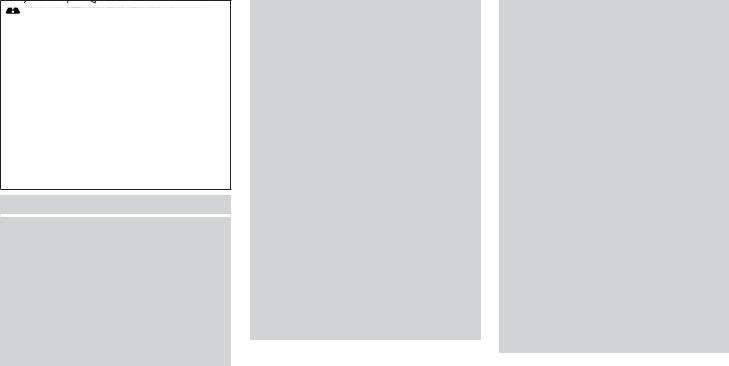
SSS0014
WARNING
●Always route the shoulder belt over your shoulder and across your chest. Never put the belt behind your back, under your arm or across your neck. The belt should be away from your face and neck, but not falling off your shoulder.
●Position the lap belt as low and snug as possible AROUND THE HIPS, NOT THE WAIST. A lap belt worn too high could increase the risk of internal injuries in an accident.
●Be sure the seat belt tongue is securely fastened to the proper buckle.
●Do not wear the seat belt inside out or twisted. Doing so may reduce its effectiveness.
●Do not allow more than one person to use the same seat belt.
●Never carry more people in the vehicle than there are seat belts.
●If the seat belt warning light glows continuously while the ignition is turned ON with all doors closed and all seat belts fastened, it may indicate a malfunction in the system. Have the system checked by a NISSAN dealer.
●No changes should be made to the seat belt system. For example, do not modify the seat belt, add material, or install devices that may change the seat belt routing or tension. Doing so may affect the operation of the seat belt system. Modifying or tampering with the seat belt system may result in serious personal injury.
●Once a seat belt pretensioner has activated, it cannot be reused and must be replaced together with the retractor. See your NISSAN dealer.
●Removal and installation of pretensioner system components should be done by a NISSAN dealer.
●All seat belt assemblies, including retractors and attaching hardware, should be inspected after any collision by a NISSAN dealer. NISSAN recommends that all seat belt assemblies in use during a collision be replaced unless the collision was minor and the belts show no damage and continue to operate properly. Seat belt assemblies not in use during a collision should also be inspected and replaced if either damage or improper operation is noted.
●All child restraints and attaching hardware should be inspected after any collision. Always follow the restraint manufacturer’s inspection instructions and replacement recommendations. The child restraints should be replaced if they are damaged.
Safety—Seats, seat belts and supplemental restraint system 1-9
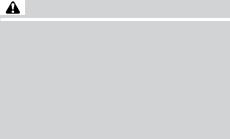
CHILD SAFETY
Children need adults to help protect them. They need to be properly restrained.
In addition to the general information in this manual, child safety information is available from many other sources, including doctors, teachers, government traffic safety offices, and community organizations. Every child is different, so be sure to learn the best way to transport your child.
There are three basic types of child restraint systems:
●Rear-facing child restraint
●Front-facing child restraint
●Booster seat
The proper restraint depends on the child’s size. Generally, infants up to about 1 year and less than 20 lbs (9 kg) should be placed in rear-facing child restraints. Front-facing child restraints are available for children who outgrow rear-facing child restraints and are at least 1 year old. Booster seats are used to help position a vehicle lap/shoulder belt on a child who can no longer use a front-facing child restraint.
WARNING
Infants and children need special protection. The vehicle’s seat belts may not fit them properly. The shoulder belt may come too close to the face or neck. The lap belt may not fit over their small hip bones. In an accident, an improperly fitting seat belt could cause serious or fatal injury. Always use appropriate child restraints.
All U.S. states and Canadian provinces or territories require the use of approved child restraints for infants and small children. See “Child Restraints” later in this section.
Also, there are other types of child restraints available for larger children for additional protection.
NISSAN recommends that all pre-teens and children be restrained in the rear seat. According to accident statistics, children are safer when properly restrained in the rear seat than in the front seat.
This is especially important because your vehicle has a supplemental restraint system (Air bag system) for the front passenger. See “Supplemental restraint system” later in this section.
1-10 Safety—Seats, seat belts and supplemental restraint system
Infants
Infants up to at least 1 year old should be placed in a rear-facing child restraint. NISSAN recommends that infants be placed in child restraints that comply with Federal Motor Vehicle Safety Standards or Canadian Motor Vehicle Safety Standards. You should choose a child restraint that fits your vehicle and always follow the manufacturer’s instructions for installation and use.
Small children
Children that are over one year old and weigh at least 20 lbs (9 kg) can be placed in a forwardfacing child restraint. Refer to the manufacturer’s instructions for minimum and maximum weight and height recommendations. NISSAN recommends that small children be placed in child restraints that comply with Federal Motor Vehicle Safety Standards or Canadian Motor Vehicle Safety Standards. You should choose a child restraint that fits your vehicle and always follow the manufacturer’s instructions for installation and use.
Larger children
Children who are too large for child restraints should be seated and restrained by the seat belts which are provided. The seat belt may not fit properly if the child is less than 4 ft 9 in (142.5 cm) tall and weighs between 40 lbs (18 kg) and
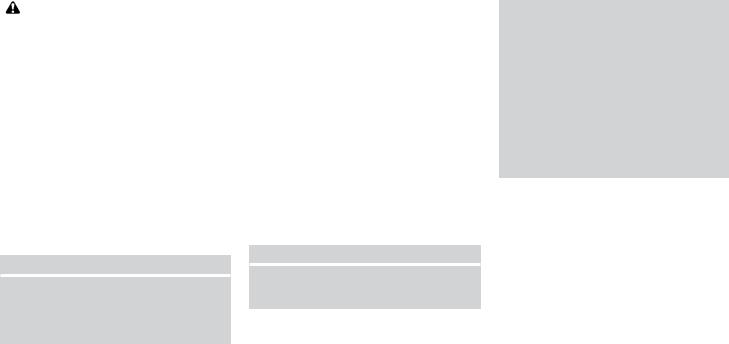
80 lbs (36 kg). A booster seat should be used to obtain proper seat belt fit.
NISSAN recommends that a child be placed in a commercially available booster seat if the shoulder belt in the child’s seating position fits close to the face or neck or if the lap portion of the seat belt goes across the abdomen. The booster seat should raise the child so that the shoulder belt is properly positioned across the top, middle portion of the shoulder and the lap belt is low on the hips. A booster seat can only be used in seating positions that have a three-point type seat belt. The booster seat should fit the vehicle seat and have a label certifying that it complies with Federal Motor Vehicle Safety Standards or Canadian Motor Vehicle Safety Standards. Once the child has grown so the shoulder belt is no longer on or near the face and neck, use the shoulder belt without the booster seat.
WARNING
Never let a child stand or kneel on any seat and do not allow a child in the cargo areas while the vehicle is moving. The child could be seriously injured or killed in an accident or sudden stop.
PREGNANT WOMEN
NISSAN recommends that pregnant women use seat belts. The seat belt should be worn snug and always position the lap belt as low as possible around the hips, not the waist. Place the shoulder belt over your shoulder and across your chest. Never run the lap/shoulder belt over your abdominal area. Contact your doctor for specific recommendations.
INJURED PERSONS
NISSAN recommends that injured persons use seat belts. Check with your doctor for specific recommendations.
THREE-POINT TYPE SEAT BELT WITH RETRACTOR
WARNING
●Every person who drives or rides in this vehicle should use a seat belt at all times.
●Do not ride in a moving vehicle when the seatback is reclined. This can be dangerous. The shoulder belt will not be against your body. In an accident, you could be thrown into it and receive neck or other serious injuries. You could also slide under the lap belt and receive serious internal injuries.
●For the most effective protection when the vehicle is in motion, the seat should be upright. Always sit well back in the seat with both feet on the floor and adjust the seat belt properly.
Safety—Seats, seat belts and supplemental restraint system 1-11

WRS0692
Manual front seat shown
Fastening the seat belts
1.Adjust the seat. See “Seats” earlier in this section.
WRS0137
2 Slowly pull the seat belt out of the retractor and insert the tongue into the buckle until you hear and feel the latch engage.
●The retractor is designed to lock during a sudden stop or on impact. A slow pulling motion permits the seat belt to move, and allows you some freedom of movement in the seat.
●If the seat belt cannot be pulled from its fully retracted position, firmly pull the belt and release it. Then smoothly pull the belt out of the retractor.
WRS0138
3 Position the lap belt portion low and snug on the hips as shown.
4 Pull the shoulder belt portion toward the retractor to take up extra slack. Be sure the shoulder belt is routed over your shoulder and across your chest.
The front passenger seat and the rear seating positions three-point seat belts have two modes of operation:
●Emergency Locking Retractor (ELR)
●Automatic Locking Retractor (ALR)
1-12 Safety—Seats, seat belts and supplemental restraint system
